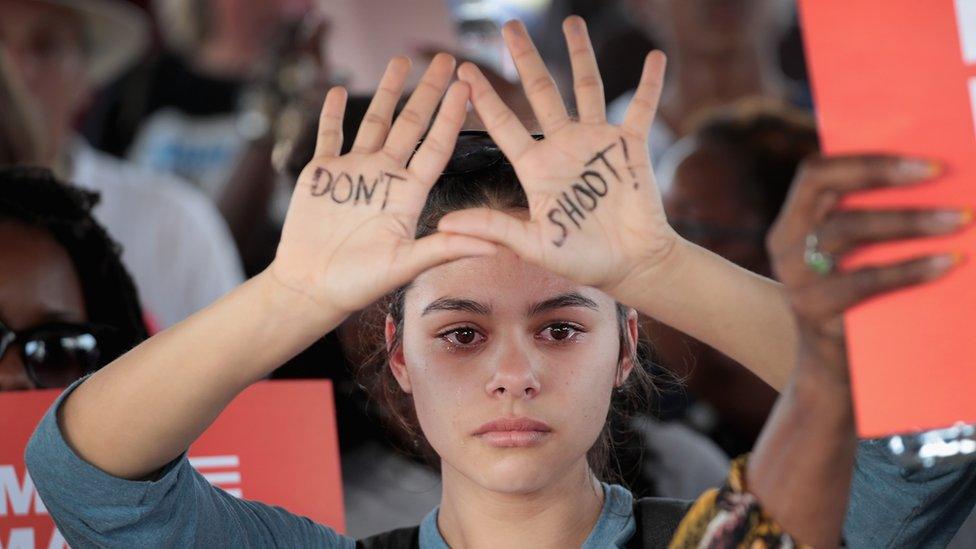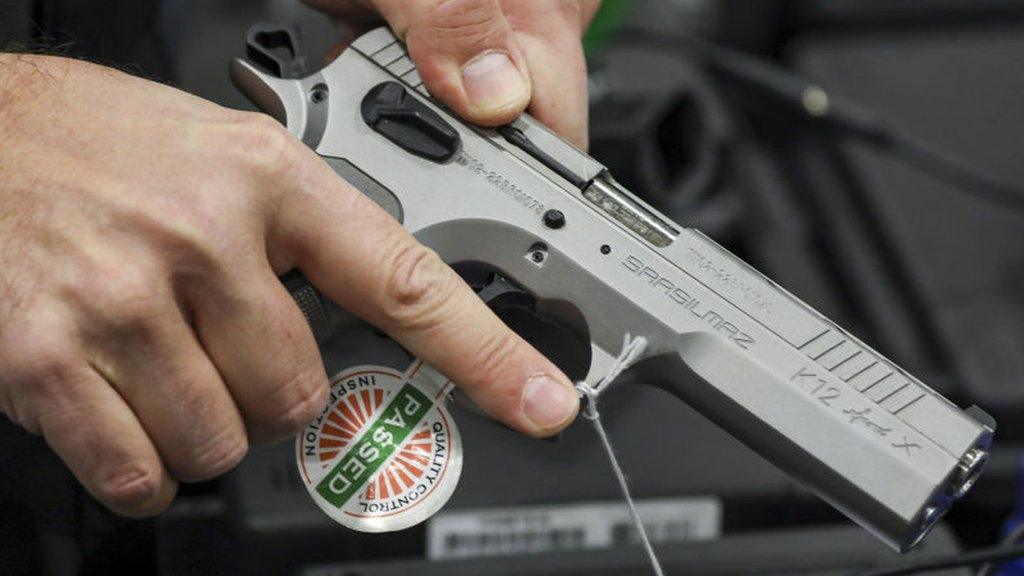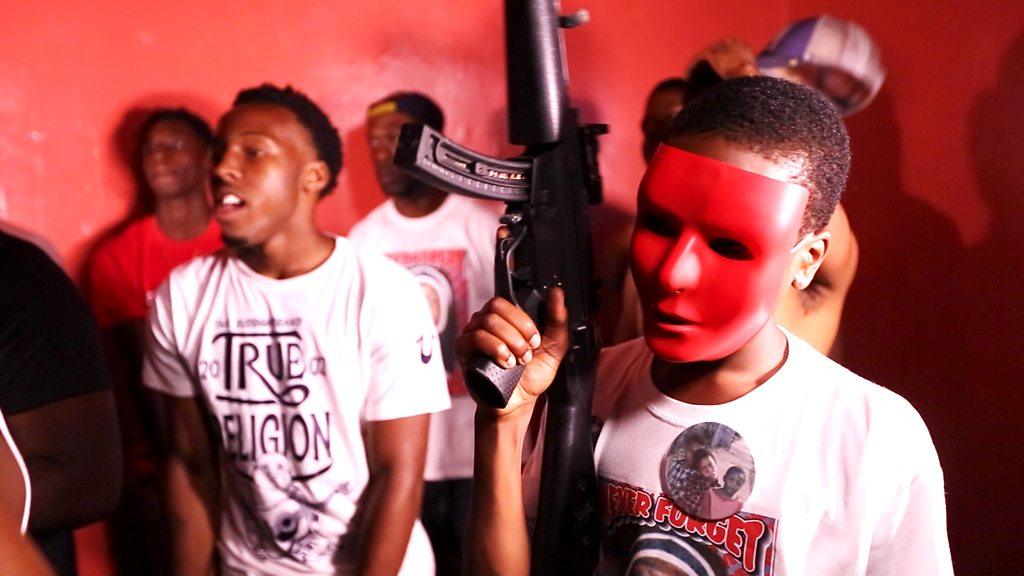Never Again: Is gun control movement too white?
- Published

Is the new movement against gun violence that is sweeping America too white and too rich?
It's a question hotly debated on social media as hundreds of thousands rallied on Saturday in support of the #NeverAgain campaign that emerged after 17 people were killed in a gun attack at a high school in Parkland, Florida, last month.
Protesters are being accused of hypocrisy, as some ask why they didn't turn out for the Black Lives Matter movement, which was set up in 2013 to end police violence against black people and highlight the impact of gun violence in ethnic minority communities.
In 2016 more than 52% of murder victims (73% killed by guns) in America were black, external, even though black people make up 13% of the population.
Debate on Twitter focused on a photograph of white protesters holding up their palms, which read: "Don't shoot." The slogan and gesture became a rallying cry in 2014 after 18-year-old Michael Brown, who was reported to be raising his arms, was fatally shot by a white police officer in Ferguson, Missouri.
Accusations that the weekend marches had appropriated the slogan were shared more than 3,000 times.
"Where were y'all when black people were getting shot though? If gun control don't include police and your protesting doesn't include innocent black people, I do not want it!" tweeted @frankpuddles.

You might also be interested in:

"Oh, what's that Never Again? Oh, 30 people were killed in Chicago since the march," wrote @MrRidiculous4.
However, others highlighted that black and Hispanic students had given speeches at the March for Our Lives.
Allow X content?
This article contains content provided by X. We ask for your permission before anything is loaded, as they may be using cookies and other technologies. You may want to read X’s cookie policy, external and privacy policy, external before accepting. To view this content choose ‘accept and continue’.
"More than half of the speeches were for BLM and the minorities who are the majority of gun violence survivors. Did you guys even go or watch? It's such an inclusive movement against all gun violence," tweeted @onegirlpizza, who conceded that using Black Lives Matter slogans was "inappropriate".
Race was also the subject of signs posted online with the Black Lives Matter hashtag.
Allow Instagram content?
This article contains content provided by Instagram. We ask for your permission before anything is loaded, as they may be using cookies and other technologies. You may want to read Meta’s Instagram cookie policy, external and privacy policy, external before accepting. To view this content choose ‘accept and continue’.
Black Lives Matter activists posted on Instagram their stories from the march, focusing on the two movements working together.
"We organised almost 1,000 students in less than 10 days from over 24 diff[erent] cities. I work with black youth who live in cities with real everyday stories on gun violence. Fourth Graders to college were so beautifully brave and focused today," wrote @tiffanydloftin.
Allow Instagram content?
This article contains content provided by Instagram. We ask for your permission before anything is loaded, as they may be using cookies and other technologies. You may want to read Meta’s Instagram cookie policy, external and privacy policy, external before accepting. To view this content choose ‘accept and continue’.
Media attention
Some critics suggested that Never Again has attracted so much attention because of the race and economic background of its founders, who are students at the Marjory Stoneman Douglas high school in Parkland.
"The Never Again movement has been spearheaded by white teens - that's why it's garnered so much attention," tweeted @gideonsvid, external.
"Families of black victims called for an end to violence, but that did not receive widespread media coverage. Black victims, whether victims of neighbourhood violence or otherwise, have not received the support that white victims have received," said one Instagram user, referring to a picture of a man holding a sign reading: "Black students matter."
Allow Instagram content?
This article contains content provided by Instagram. We ask for your permission before anything is loaded, as they may be using cookies and other technologies. You may want to read Meta’s Instagram cookie policy, external and privacy policy, external before accepting. To view this content choose ‘accept and continue’.
The issue of perceived disparity in media attention was raised by Naomi Wadler, 11, at the March for Our Lives rally in Washington DC. She co-led a walkout from her school last week and said she represented black American girls ignored by the media and suffering from gun violence.
Never Again founder David Hogg also said black survivors in his school, where 25% of the pupils are black, had not received the same media platform, external as himself and other teenagers.
Public appeals by relatives of fatally shot black men received high-profile media coverage in 2014, including Erica Garner, whose father died in New York City, and Lesley McSpaddon, mother of Michael Brown.
- Published24 March 2018

- Published17 December 2024

- Published28 April 2015

- Published7 September 2016
